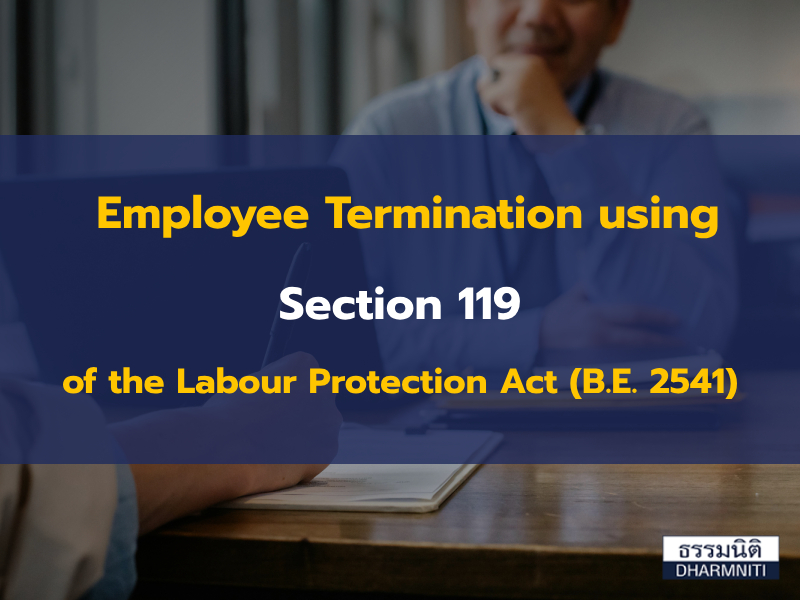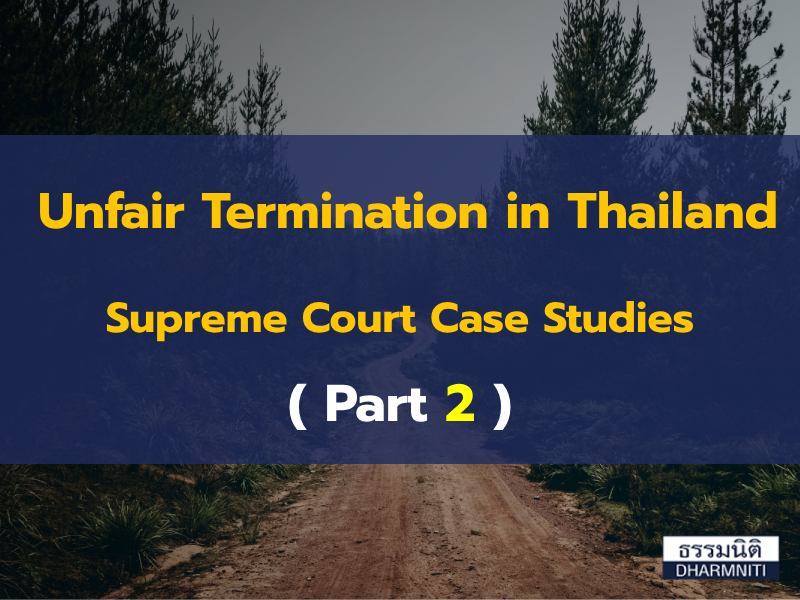How to Conduct a Mass Employee Termination & Issues for Employers to Consider
In this article, we shall look into the various factors which an employer should consider if they are planning on conducting a mass termination of their workforce. We shall examine the various stages in planning for this including preliminary steps and issues to consider right through to what to consider on the actual date of termination.
Stage 1 – Planning & Background Stage
Before an employer undertakes a mass termination of their workforce, they need to consider a number of things, one of the most important being an examination of the employment agreements of the staff to be terminated along with their work to see what they provide for regarding termination, severance pay and advance notice requirements. The terminations must at a minimum be in compliance with Thai law but should also comply with the employment agreement & work rules too.
An employer should also check the total liabilities that it will need to pay taking into account severance pay entitlement, unused annual leave, advance notice requirements as well as any other payout as required under the employment contracts or the employer’s work rules.
The Employer should also carefully consider the reason behind the terminations as this issue will be critical in determining if such terminations are fair or unfair in the eyes of the law. One potential reason an employer may wish to use is re-organization of the company due to financial hardship as it could help an employer to avoid/minimize unfair termination claims. However if an employer wishes to rely on this justification it should be aware that the Supreme Court has specified a range of criteria in determining whether a termination based on such reorganization is fair or unfair, these criteria include examining the extent of losses incurred by the employer, the capacity of the employer to raise new capital or additional funds/ capital, the seriousness of the financial position of the employer i.e. is the employer close to being dissolved or is its business still commercially viable? If an employer wishes to use this reason as the justification for the mass termination of its workforce then the writer advises that the employer should firstly try to avoid this course of action by negotiating with its employees to ask their staff to agree to reducing salaries or other work benefits, or withholding salary raises or canceling bonuses. It would also be advisable for an employer to try to use other approaches to cut costs before conducting terminations due to reorganization, the employer should retain evidence of such cost saving attempts as these may be very useful in court at a later stage if the terminations go ahead and the employer needs to provide that it undertook other preliminary cost saving steps to avoid the need to terminate staff.
To minimize risk relating to unfair termination, an employer should also consider other approaches to reducing staff, one possible approach would be using an ‘early retirement’ program, however employer’s should be aware that this would only be suitable for those staff who are willing to resign. Moreover, this option will depend on what incentives the employer is willing to offer to staff in exchange for their resignation or early retirement.
Finally, during the planning stage, an employer should also check to see if any of the workers to be terminated are pregnant as they make an argument that they are being terminated because of their pregnancy which is against the Labour Protection Act. Moreover, the employer should also find out if any of the staff to be terminated are committee members on the Employee’s Committee because if there are, then according to s.52 of the Labour Relations Act they will need approval from the Labour Court to dismiss such employees.
Stage 2 – Preparation
Once the previously mentioned background steps have been undertaken, an employer should then determine exactly which staff will be terminated and if such staff will be terminated at once or if it will carried out over a longer period. If an employer wishes to do it over an extended period and they wish to use the reorganization approach then they should be careful to ensure that the terminations are conducted objectively i.e. an employer should not terminate problematic or unpopular staff first and then better staff later on, if this occurs it could be construed by the Thai labour court that such terminations are unfair.
An employer should then prepare the termination letters for all employees that are to be terminated. The letters should mention the reason for the termination and should be signed by an authorized person such as the Authorized Director(s). The letters should also have an attachment mentioning the termination benefits that the employee shall receive. One of the key preparatory steps which an employer should adequately plan for is to ensure it has sufficient funds to pay the termination payments and to arrange cashiers cheques for the staff.
On a practical level, if there are many staff to be terminated, it would be sensible to liaise with relevant Government authorities in relation to the terminations including the Labour Dept, Labour Welfare Committee and the local police so that they are aware of what is going to happen and can prepare accordingly. It may also be a good idea to arrange an extra security presence at the workplace on the date of the terminations.
With respect to company assets/ property held by the staff to be terminated, it may also be a good idea for the company to recall all hardware and assets from the staff being terminated in the days before the termination.
If some of the staff to be terminated are foreigners then the Employer will need to work out a plan for cancelling the non-immigrant B class visas of such staff as well as their work permits. If the company will still keep some foreign employees after the termination, it will need to check that there are a sufficient number of Thai staff to meet the legal requirements such as ratio of Thai staff to foreign staff.
If the employees have a provident fund, the fund will need to be notified of the upcoming terminations so it can prepare payouts to the employees in relation to their contributions under the fund which may include employer contributions too.
Stage 3 – Terminations
When issuing the termination letters to each staff member the employer should ideally have each staff member sign for their letter. If possible the employer should try to record the handover using a video recorder as evidence of how the terminations were conducted as some staff may be unwilling to sign for their termination letters. When handing the letters and cheques over the staff should at the same time return keys, access cards, credit cards and other company assets to minimize the risk of problems arising later on. If terminated staff have access to the employer’s bank accounts then the writer recommends that online access codes should be changed in advance of the termination occurring or the relevant staff becoming aware of their termination.
The writer recommends that the employer’s lawyer/ labour law expert should also be in attendance at the workplace to help the Company through the termination process by answering queries asked by the employees regarding the termination and how the payout money was determined in accordance with the law.
When explaining the reason for the termination to the staff the Company should be careful to ensure that it is consistent in its message to departing staff so that they are all told the same message as otherwise the employees may feel that the reason is not legitimate and become upset about the terminations.
Dharmniti Law Office Co., Ltd.
2/2 Bhakdi Building 2nd Floor, Witthayu Road, Lumphini, Pathumwan, Bangkok 10330
Tel: (66) 2680 9777
Fax: (66) 2680 9711
Email: ryan@dlo.co.th or info@dlo.co.th




 Except where otherwise indicated, content on this site is allowed to be used under
Except where otherwise indicated, content on this site is allowed to be used under